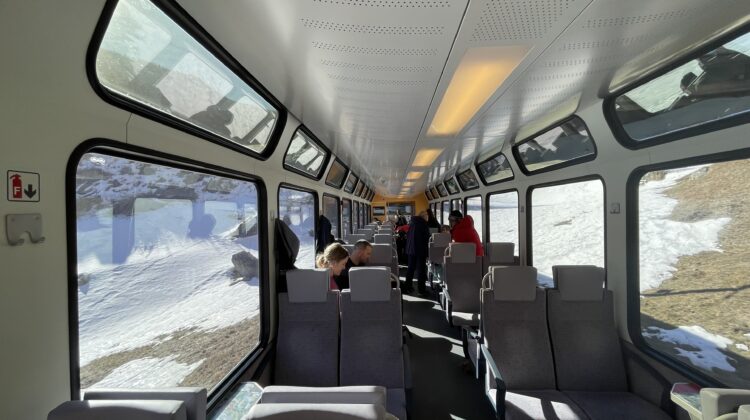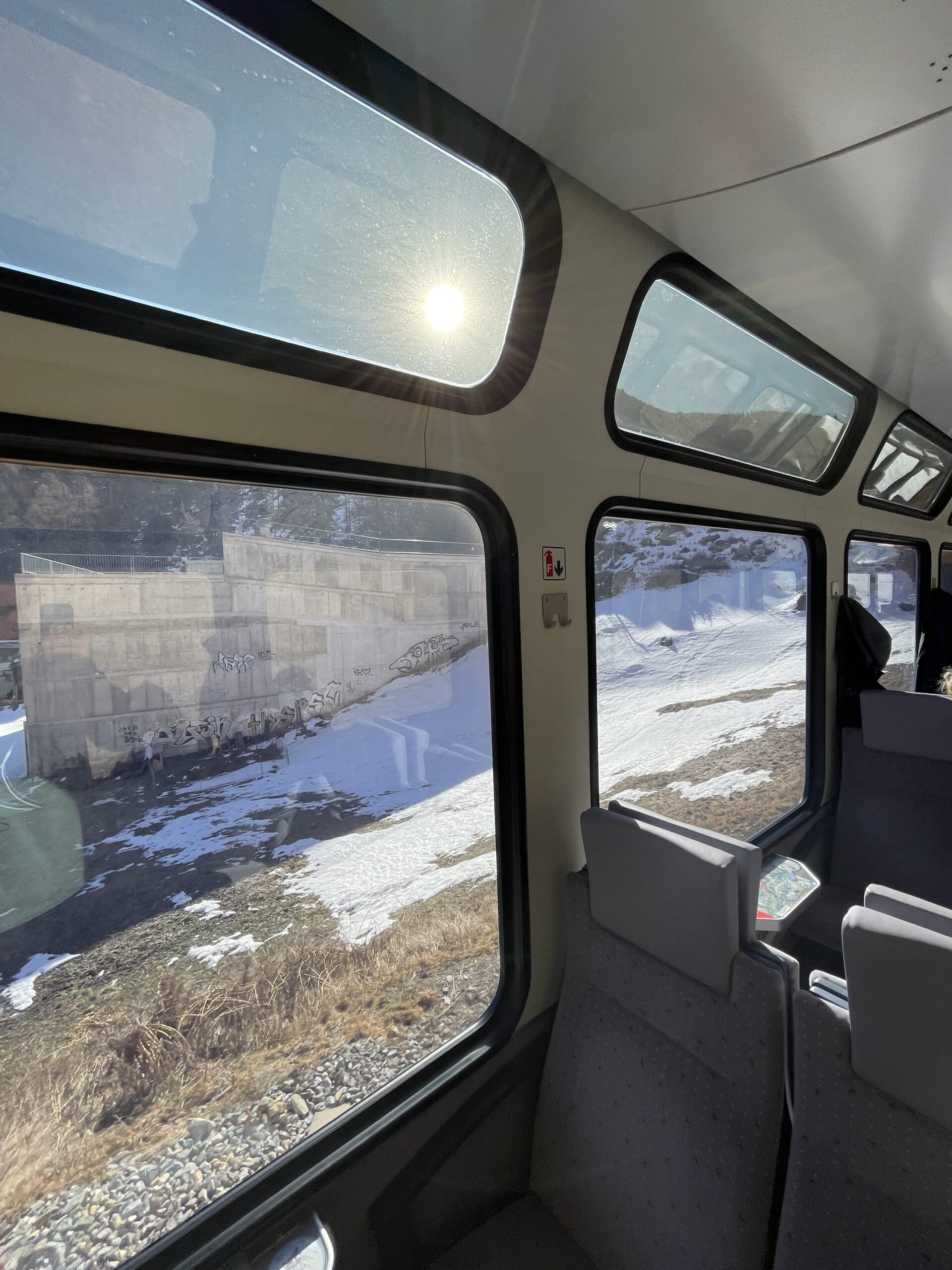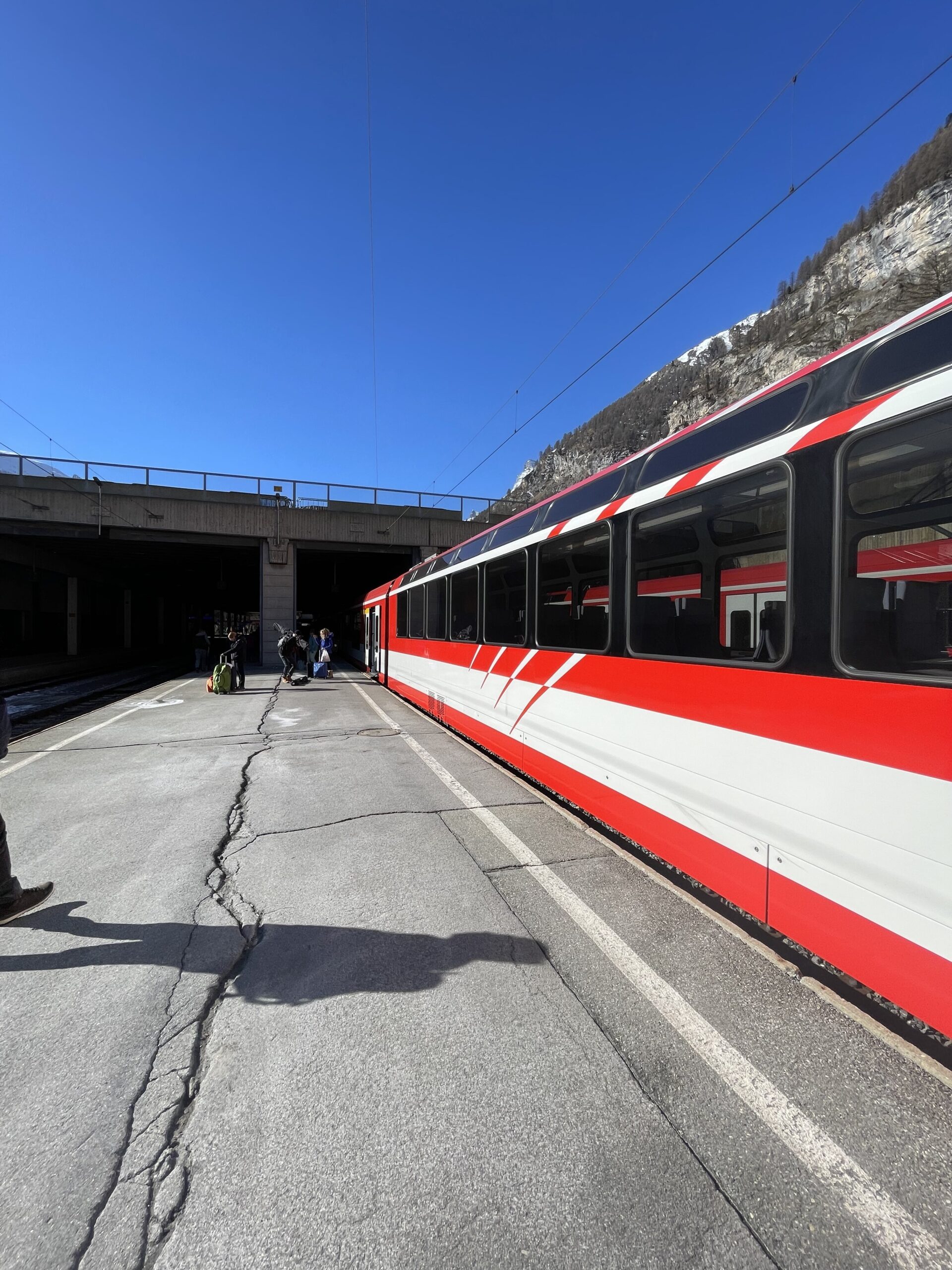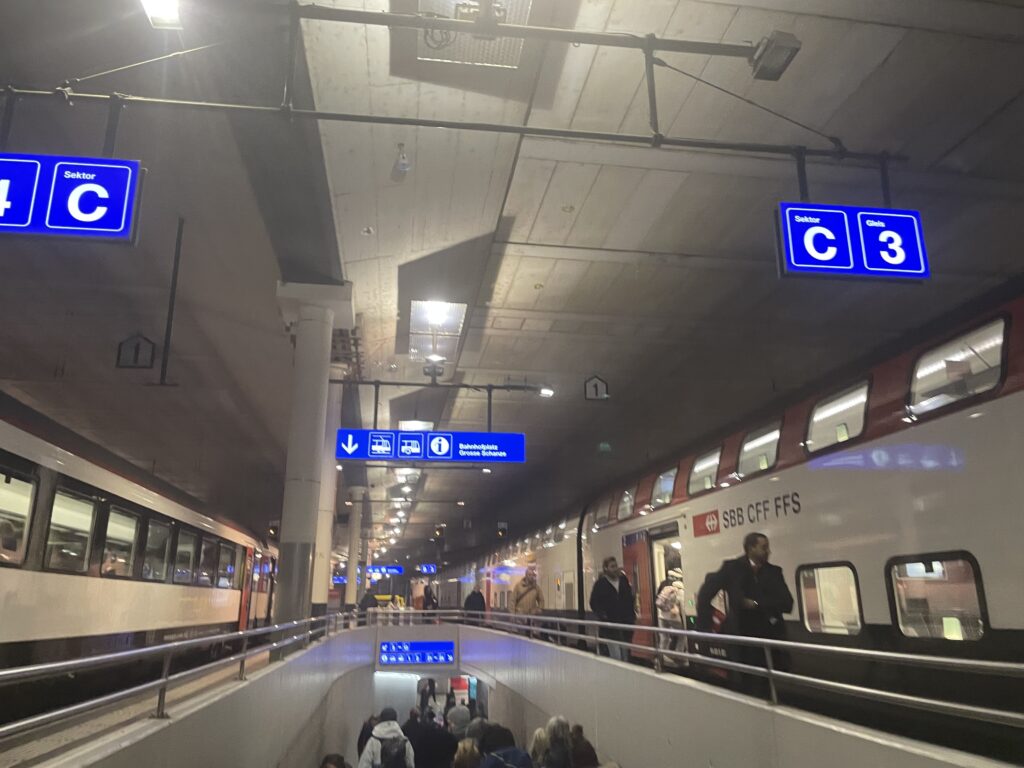
Nonstop Points has partnered with CardRatings for our coverage of credit card products. Nonstop Points and CardRatings may receive a commission from card issuers. Opinions, reviews, analyses & recommendations are the author’s alone, and have not been reviewed, endorsed or approved by any of these entities. This post may contain affiliate links; please read our advertiser disclosure for more information
As an avgeek, my favorite mode of transport is, of course, by air. If I can take an airplane somewhere, I will often try to, including between cities in Europe. However, sometimes the best, if not the only, option is via train.
During my ski trip to Switzerland, I needed to get from Zurich to Zermatt for some quality time on the slopes. Car transfers were relatively expensive, which left trains as the best means of transportation. I had heard particularly good things about Swiss trains and agree with the reviews. I was thoroughly impressed with their ease of use, timeliness, plentiful number of trains, and cleanliness. This article will include my thoughts.
This article is part of my Trip Report: Skiing in Switzerland including:
- Lounge Review: United Polaris Lounge IAD
- Flight Review: TAP Air Portugal Long Haul Business Class Flight IAD-LIS
- Flight Review: TAP Air Portugal Intra-Europe Business Class Flight LIS-ZRH
- Lounge Review: TAP Premium Lounge Lisbon
- Hotel Review: Moxy Bern Expo
- The Trains of Switzerland: My Thoughts
- Hotel Review: Hotel Schweizerhof of Zermatt
- Skiing Zermatt in March: My Thoughts
- Going to Italy for Lunch
- Hotel Review: Sheraton Zurich
- Lounge Review: Swiss International Lounge Zurich
- Flight Review: United Polaris Business Class ZRH-IAD
The Pros
To start, the train system is impressively efficient. The trains we took arrived and departed on time. Trains would pull up to the platform and you could press the entry button for the doors to open without the need for a conductor to put downstairs like is needed in the US.
We took a total of 6 trains in addition to plenty of local trams, and of course, the infamous ski train in Zermatt. All of our rides were smooth and efficient.
Further, it was very easy to navigate thanks to Apple Maps. I was able to plug in my destination and the app would suggest available trains and times. Compared to having to look at the train company’s website, this was quick and efficient.
The trains were well maintained without heaps of trash or filth. My favorite ride was up the mountain from Visp to Zermatt. With the large glass walls of the train car, it was a beautiful ride.


The Cons
Despite being public transport, the trains were expensive, more expensive than I was anticipating. Our round-trip business class flights to Switzerland came out to less than a one-way 2nd class train ticket from Zurich to Zermatt (not accounting for the value of the miles).
Compared to the prices I am accustomed to on Amtrak, between Charlottesville and D.C., as well as D.C. and New York, costs in Switzerland were far more for a shorter train ride. I guess that is a price you pay for efficiency and honestly, more comfort. Having said that, for students traveling more extensively through Europe vs. a few day trip to Switzerland, a Eurorail would be the way to go.
My only other concern was the timing of the trains. No matter how we went about it, we had a sub-7-minute connection in Visp. Although, I know this is no 35-minute connection in Atlanta, I still was concerned we were going to miss the second train.

All worked out okay, but I wish they had scheduled the trains just a bit further apart.
The Last Point
When navigating Switzerland, I do not know if there would have been an easier way than by train. The stations always had clear directions and with the integration of Maps, it was easy to navigate the country.
Not cheap, but also still a very enjoyable and comfortable experience. Next time, maybe I’ll have to try the Glacier Express, although the price of that will really hurt the wallet.
Nonstop Points has partnered with CardRatings for our coverage of credit card products. Nonstop Points and CardRatings may receive a commission from card issuers. Opinions, reviews, analyses & recommendations are the author’s alone, and have not been reviewed, endorsed or approved by any of these entities. This post may contain affiliate links; please read our advertiser disclosure for more information


So, you can buy much cheaper Swiss train tickets on their app/website, a few months out, if you are sure of your schedule. Use the “Supersaver” ticket option. Additionally, when buying your tickets, you can do an advanced search and spread out the transfer time on the trains you have chosen (up to 30 minutes per transfer).
Agree they are not cheap, but trains in Switzerland can be had cheaper with some planning (and accepting the risk of missing your train as it is non-refundable when you buy a discount ticket).
Thanks for the tip about searching with a larger transfer time, I’ll use that next time! We knew that we could buy the ticket in advance at a discount, but given that we were trying to get on the train immediately after landing in Zurich, we did not want to risk it without the flexibility, so we paid the full price.
Definitely very helpful for someone who can pay in advance!
Get the Swiss Rail app. From 60 days before your trip you can buy a “saver day pass” that is good for travel on any train all day. Price goes up based on demand as you get closer to travel date. But right now it is CHF 70 for a date one month from now, which is typical (or CHF 119 for first class which is high, I have seen lower). That is the best deal on Swiss railways and no worries if your flight is delayed or you don’t want to rush for the 7 minute connection (Visp to Zermatt are every 30 mins).
This blog post presents an intriguing viewpoint on Swiss train riding. The author gives a thorough review of the Swiss train network, emphasising its effectiveness, hygienic conditions, and punctuality. Additionally, the article includes first-hand experiences and observations that help readers get a feel for what it’s like to take the train in Switzerland. It would be a good idea to provide some information about the expense of rail travel in Switzerland since this is a concern for many tourists. It would also be beneficial to offer some advice for first-time visitors to Switzerland on how to buy tickets or use the railway system. Overall, this is a fantastic resource for anyone curious to learn more about rail travel in Switzerland.
I just came back from 2 weeks in Switzerland and used the trains extensively. I agree with everything you wrote. I too was concerned about the short transfer times to change trains. What helped was the SBB train app because it showed the platform I had to get to. So as we approached the train station, like what the Swiss do, we were ready to get off the train as soon as the door opened and rushed to the next platform. I did not like the fact that we had to rush to the next platform, but it is what it is. It also shows the next trains, so if you want to take your time, you know how long it will take for the next train to arrive. We didnt want to waste 30 minutes waiting for the next train so we always rushed to the one leaving the soonest. One thing to mention for those who are not familiar with the Swiss trains is that there there are first class and second class cabins and that you should not board the first class cabin if you don’t have the first class ticket. One helpful feature is that the electronic signs on the platform show you ahead of time which cabins are first class and which ones are second class so that you can position your boarding position correctly.
There are other ways to make it cheaper as well… the Swiss Half Fare card. For $135 dollars, almost all modes of transportation are half off.
And regarding the “tight” connections, the system is so efficient that these “7 min connections” are very rarely an issue. I’ve had some 5 min connections and never missed a train. The connecting train is never more than a 1 or 2 minute walk. Not like airports where it might take you 15 or 20 minutes to get to your connecting gate.
“The connecting train is never more than a 1 or 2 minute walk.”
Not always, especially when there is a huge crowd getting off the train and slowly walking toward the exits (which we experienced multiple times). It’s worse if you have a lot of luggage to carry/roll with you through the crowds.
I used the SBB app to map out exactly where the platform was for the next train I needed to board, so I knew ahead of time exactly where to go. But with the location of the carriage I was on, combined with big crowds moving slowly, and pulling 2 suit cases behind me, I had to push myself through the crowds to get to the long ramp to go under the tracks, make my way to the next platform, and then walk up the long long ramp with my suitcases to get to the train – which easily took at least 5 minutes to do.
If the next train is on the same platform, then yes it will only take 1-2 minutes to change trains, but you cannot count on it. Most of the time for me it was on a different platform that required me to go under the tracks to get to.
“…the Swiss Half Fare card” -it’s a great card. But the main drawback is you have to buy each ticket individually. This is why we chose the regular Swiss Travel Pass so we could just board the trains without having to waste time buying tickets and it gave us unlimited use of the system for the 15 days we were there. It is more expensive, but we used it a lot so it was definitely worth it.